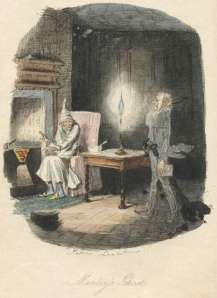‘Self-publishing can be both an exhilarating and lonely experience for an author, so anyone considering it should surround themselves with as much support as possible …’
That was Book Nanny speaking about the role of editing and editors with author, Anne O’Leary, for her article ‘Self-publishing: say goodbye to vanity and come in from the cold’ which was published in the January 2016 edition of Books Ireland.
The big question for many writers is: where do I find that support?
Professional Editors
Finding a good editor is a great start. A professional editor can provide a practical source of support and assistance to a writer during the publishing process, not only in terms of helping you to make your finished novel the best it can be, but also as someone to bounce ideas off or answer any queries you might have.
Writers’ Groups
It’s impossible to overstate the benefits of being a member of a writers’ group and the tremendous practical and emotional (don’t underestimate the need for this!) support it provides during the writing and publishing process, helping you to stay positive, energised and focussed during the dark days and lonely hours when all is not progressing as smoothly or as quickly as you would like.
Writers’ Centres
Writing courses, seminars and workshops can be a vital source of networking for writers. They allow you not only to improve your craft, but also to meet other like-minded authors. Many writing groups originate as a group of writers who meet at a course and who share a desire to keep the support going, so check out your local arts or writers’ centre for courses, workshops and networking events – it’s worth making full use of the resources they offer.
The Irish Writers Centre in Dublin is the national resource centre for Irish literature and runs courses and events covering all aspects of Irish writing.
Online Resources
One of my favourite writing resources is Writing.ie, an online magazine packed full of articles, news, events and information about all aspects of writing and self-publishing.
And don’t forget Facebook. There are any number of writers’ groups covering all fiction genres on Facebook. Some groups are public (everyone can see posts) and some are closed (only members of the group can see the posts). You can network with other writers and editors, ask all sorts of questions, and find out all you need to know about both traditional and independent/self-publishing options. My favourites are Fiction Writers and Editors and Ask A Book Editor. Both are closed groups, so you will need to follow the joining instructions to be added as a member.
Professional Organisations
The writing community is a generous one, with writers willing to share their knowledge with other writers. Listening to and talking with other independently-published authors can give you first-hand experience of the pitfalls of self-publishing as well as many practical tips for success. If you are interested in self-publishing, you should consider joining a professional organisation which gives you access to all that experience on an international level.
ALLi (Alliance of Independent Authors) is a non-profit professional organisation promoting publishing excellence and support for independent authors. ALLi has its own weekly newsletter and Facebook group.
ALLi also provides a list of vetted publishing service providers, including editors, graphic designers, formatters and printers. Book Nanny is proud to be an ALLi Partner Member.
Crowdfunding
Book Nanny is a vetted supplier for the crowdfunding platform PubLaunch. Their website is packed with information about crowdfunding and they often offer webinars and one-to-one consultations, so do check out the website if crowdfunding is something you would be interested in.
Literary Festivals/ Writers’ Conferences
Speaking from personal experience, there is nothing quite like the positive energy and excitement a writer can get from attending a literary festival or writers’ conference. It’s a wonderful way to meet other writers and industry professionals and we are lucky here in Ireland to have so many great festivals and events to choose from. Here’s a selection of the festival/conferences which take place across the country throughout the year:
Doolin Writers’ Weekend, Doolin, Clare
Cuirt International Festival of Literature, Galway
International Literature Festival (ILF), Dublin
Wexford Literary Festival, Wexford
Dalkey Book Festival, Dalkey, Dublin
Listowel Writers’ Week, Listowel, Kerry
Dublin Writers’ Conference, Dublin
West Cork Literary Festival, Cork
Bray Literary Festival, Bray, Wicklow
Red Line Book Festival, Tallaght, Dublin
Something Wicked Crime Writing Festival, Malahide, Dublin
Dublin Book Festival, Dublin


